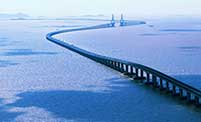

To address the overcapacity challenge presented by China’s current economy, China will take a series of measures to reform the supply front and adjust industrial structure, according to a statement from the recently concluded Central Economic Work Conference.
The overcapacity problem—in which demand for products is less than potential supply—continues to hinder China’s economic development and drag down the profit rate of businesses.
Data released by China’s National Bureau of Statistics show that the total profit of above-scale industry in this year’s first ten months slipped by 2 percent from last year, dipping a further 0.3 percentage point compared with the first three quarters.
The downturn is even more severe in the steel and coal industries, whose overcapacity rate exceeds 30 percent, said Liu Shijin, deputy director of China Development Research Foundation. Liu also added that negative growth in both the Producer Price Index (PPI) and industrial profits caused the shutdown of a lot of enterprises.
Overcapacity is also prevalent in cement, glass, non-ferrous metal and many other industries. However, “de-capacity” cannot be achieved in one stroke.
To tackle the challenge, difficulties such as huge debts and structural overcapacity, both of which hinder major industries, must to be overcome.
According to findings from the Central Economic Work Conference, China will minimize bankruptcy to reduce risks, and will take more flexible measures like merger and acquisition. Industrial structures will also be adjusted.
Yang Weimin, deputy director of the Office of the Central Leading Group on Finance and Economic Affairs, said that given a better market, enterprises will gain profit. Then they will be able to upgrade equipment and make further reforms for better development.
China’s local governments are also working toward "de-capacity" and industrial transformation.
Erdos, a city in north China famous for its coal resources, has already successfully gone through an industrial upgrade.
Miao Wei, China's Minister of Industry and Information Technology (MIIT), recently emphasized the importance of eliminating industrial overcapacity through diversified approaches.
According to Miao, strict standards for environmental protection and energy consumption should be adopted. Measures can also include subsidies for industrial restructuring, a pilot program in reducing surplus production of steel, cement and plate glass, risk-sharing mechanisms and more effective regulation.
 Are these the world’s scariest landing strips?
Are these the world’s scariest landing strips? In pics: Left behind children in China
In pics: Left behind children in China Eight modern day engineering marvels of China
Eight modern day engineering marvels of China Chinese beauty with sexiest bottom
Chinese beauty with sexiest bottom Charming female bodybuilders of Chengdu University
Charming female bodybuilders of Chengdu University Polish sports stars strip off for risqué calendar
Polish sports stars strip off for risqué calendar Spectacular aerial photos of the Three Gorges
Spectacular aerial photos of the Three Gorges Contestants of Mrs. Globe pose for photo in Shenzhen
Contestants of Mrs. Globe pose for photo in Shenzhen
 Bikini models attend hot pot banquet in Hefei
Bikini models attend hot pot banquet in Hefei Top 20 hottest women in the world in 2014
Top 20 hottest women in the world in 2014 Top 10 hardest languages to learn
Top 10 hardest languages to learn 10 Chinese female stars with most beautiful faces
10 Chinese female stars with most beautiful faces China’s Top 10 Unique Bridges, Highways and Roads
China’s Top 10 Unique Bridges, Highways and Roads Japan’s propaganda war on Diaoyu absurd
Japan’s propaganda war on Diaoyu absurd Models best placed to defend their own health
Models best placed to defend their own health Professor defies taboos to get the elderly talking about sex
Professor defies taboos to get the elderly talking about sex Developers hope AI will be able to ace?gaokao?in near future
Developers hope AI will be able to ace?gaokao?in near futureDay|Week